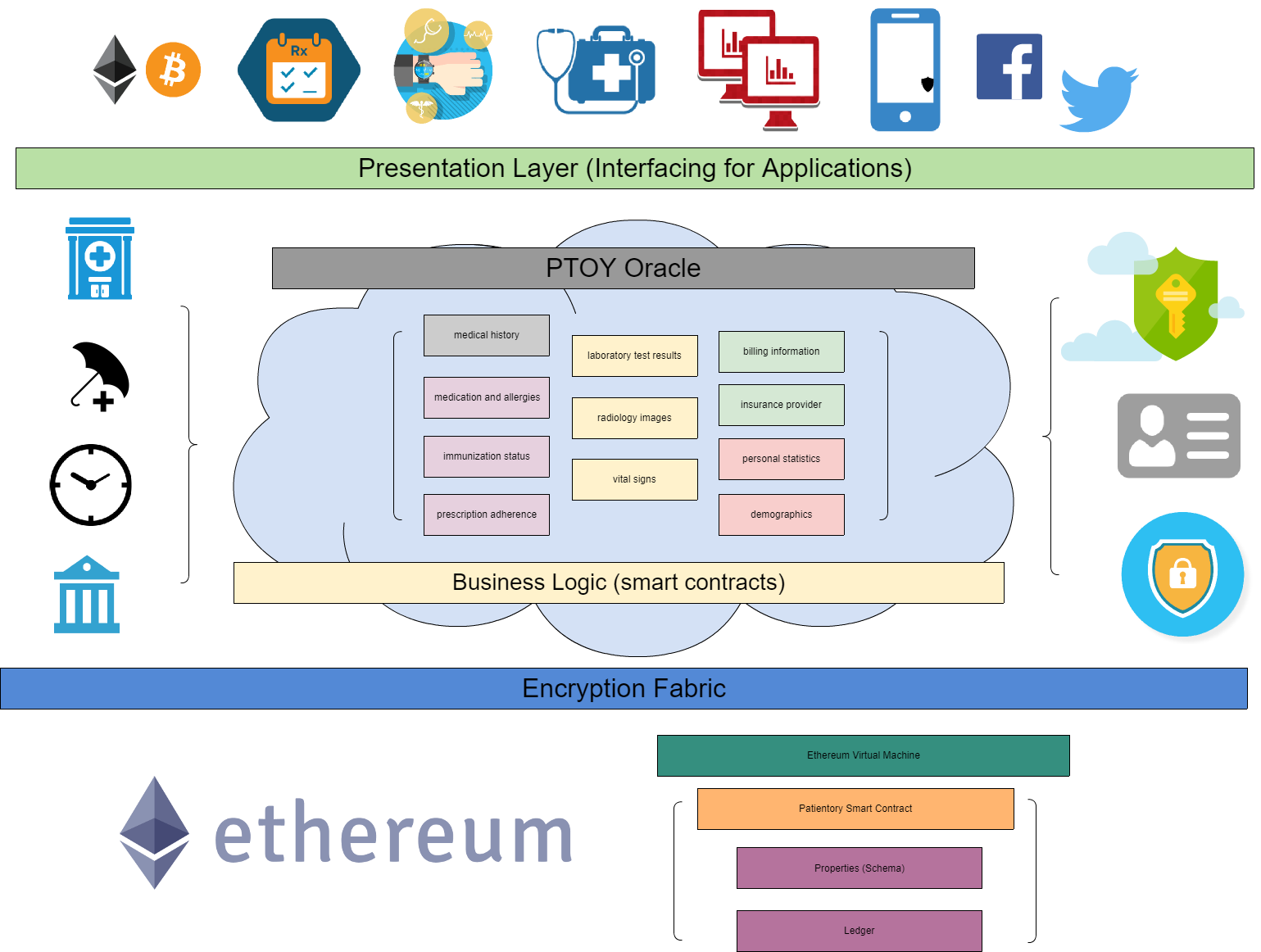Recent ransomware cyber-attacks have exposed a vulnerable global healthcare IT infrastructure. Personal Health Information data is at risk. Unfortunately, legacy systems now administrate Personal Health Information (PHI) across siloed database networks. Fragmented Electronic Medical Records (EMR) create cumbersome access points and data exchanges are fraught with friction. Patientory is a patient-centered enterprise solution designed to eliminate many of these pain points.
Patientory uses blockchain technologies to ensure end-to-end encryption while adhering to region-specific regulatory guidelines and compliance requirements. Our solution design uses encrypted middleware to meet the high-volume demands of modern day HealthcareIT. Ultimately, Patientory empowers patients, clinical care teams, and insurance providers to overcome many challenges faced within current decentralized environments.
The goal of this post is to provide insights to our platform architecture. This post assumes general knowledge of hardware security models, identity platforms, cloud computing and enclaves (secure elements).
Introducing the Middle-Tier to Blockchain
Many of the early challenges developing blockchain proof of concepts (POCs) for the enterprise revolved around two prominent concerns: scaling and privacy. In addition, the limited two-tiered architecture (client/server) presents version control issues and is difficult for in-house IT teams to implement. Poor key management also is also catastrophic for early adopters.
With time and a maturation of the technology, however, has come evolution and the use of a middle-tier in blockchain architecture. This has enabled in-house teams to develop application functionality and feature sets using familiar tools and languages. This multilevel framework provides a separation of concerns (middleware) similar to modern web infrastructures. The middle layer allows the platform to interface with existing systems and scale more efficiently off-the-chain. The business logic (smart contracts) flows securely on and off the blockchain.
How Does Patientory Fit Into the Picture?
Patientory creates, configures, and query blockchain-enabled smart contracts that leverage both “traditional” cloud middleware and new application services to support blockchain development for nodes on and off the chain. Within this framework, the implementation of modern application services like biometrics and OAuth, real-time data and billing, and personal health insurance information are now possible. Applications can be developed using standard development tools, reducing time-consuming learning curves for onboarding and implementation.
Big Data applications on the Patientory platform is also implemented and executed more expeditiously a with three-tiered architecture. Using this framework, our roadmap can expand to include ingesting Big Data from multiple sources. Harnessing this data will unearth valuable insights for clinical care teams, as well as healthcare intelligence with actionable analytics for better patient outcomes.
How We Envision the Patientory Framework
Please see the infographic below for an illustration of the Patientory framework.
- First, we start with the presentation layer. This is the user touchpoint for accessing their healthcare information in real time. Prescription adherence alerts, wearables data, Explanation of Benefits (EOB), and real-time data can be found here. Hospitals, Clinical Care providers and other enterprise members interface here as well exchanging information securely in the P2P network.
- Second tier: Middleware. Oracles execute in a secure computational environment, and have the cryptographic primitives that allow them to work directly with blockchains. On the platform, business logic executes in a fabric that binds the code to a smart contract. Identity and key management, cryptographic,services,attested data and interaction with the outside world runs in this secure environment.
- Third tier: Data Layer and Schema. This third layer serves as a distributed database of the shared truth between nodes on the blockchain. The ledger is an instantiation of a version specific contract between several different parties. Smart contracts are bound by the ledger, schema, counterparties, logic, and external sources. The platform is fully auditable and can serve to automate many healthcare operational processes.
Looking Ahead
We are confident that Patientory helps move HealthcareIT into the future. It’s not only long overdue, but the increasing amount of ransomware incidents demands it. Let me know if you feel the same.
Jesse Brown,
Chief Technology Officer
Patientory

